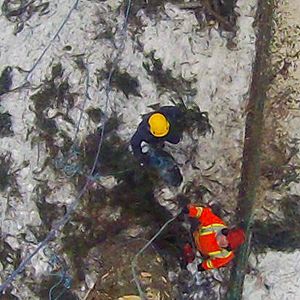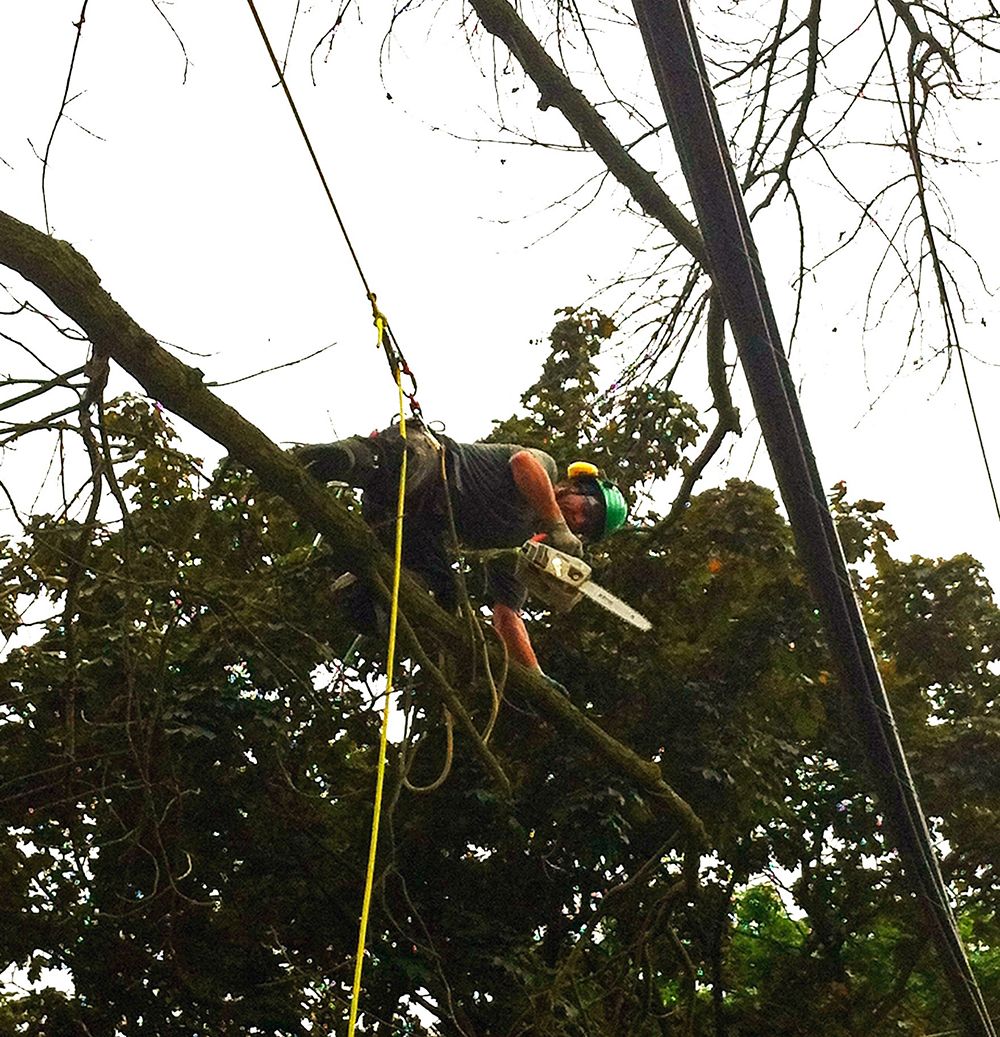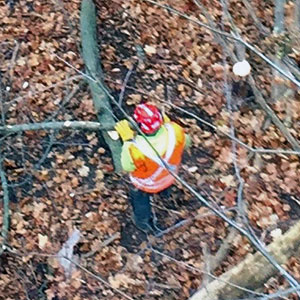Structural pruning
An unpruned open grown tree with its canopy bathed in sunlight, is free to grow out rather than up. Eager to produce starches, it seizes the opportunity to branch out more fully than the tree is designed to support. A crowded interior canopy with closely spaced branches and poor attachments can result. Over time, some of these branches will dominate and grow large, heavy, and horizontal in their quest for light. A canopy of this sort will overall, have many potential points of failure.
Pruning for good structure corrects these potential problems. Some methods are;
- pruning a young tree to establish a strong dominant central leader with evenly spaced smaller branches.
- In more mature trees; reducing, (shortening) heavy lateral limbs, and subordinating any upright limbs competing with the leader, (the strongest upright central stem).
If possible, the first structural pruning should be done when the tree has a well-established root system, but is still young. Pruning cuts made on a young and vigorous tree, close over (heal) quickly. A young tree is also better able to fight off any infection. Most importantly, a young tree with good structure has a sound foundation to grow on. As it grows in stature, it will naturally manage the weight of its branches and the canopy overall will better withstand severe weather.

Post Ice Storm Note
After the severe 2014 ice storm, we did a lot of restorative pruning. The initial pruning after a damaging storm is the first step in a 3 to 7 year pruning schedule to help the storm-damaged tree re-establish a structurally sound canopy. In our work immediately after the storm, we removed hazardous hanging branches, cleaned up the torn limbs by making clean cuts, and re-establishing a solid starting point for new growth. When a tree suddenly loses a significant amount of its canopy, it responds by rapid shoot production, to produce a sufficient amount of leaf bearing twigs to generate its food supply for the next season. You likely have seen this on your own trees or on trees around the city.
These new shoots need to be thinned in the next 2 to 3 years. The shoots with the best potential structure are chosen to re-create the canopy. Depending on the amount of canopy lost and the species of tree, this can require 2 to prunings over the next several years.
Pruning goals
Canopy thinning helps provide necessary airflow and light penetration to the inner canopy. This helps create an unfavourable environment for fungal pathogens and provides available light for new shoot and leaf development. Thinning is normally part of a standard maintenance prune to promote good tree health. Additionally, it can have secondary benefits by providing dappled light to under-story trees, shrubs, gardens and turf-grass.
Many of the trees we see could benefit by some form of Crown Reduction. Whether that be in the form of reducing heavy lower lateral limbs, spindly uprights with poor taper, correcting lions tailing, or more rarely, an overall reduction. Crown reduction must be done by a skilled pruner/climbing arborist, in a judicious manner. Selectively reducing an entire crown is time consuming; there is much decision making and cutting. This practice should NOT be confused with topping. Topping is the drastic removal or cutting back of large branches in mature trees.


Other general maintenance pruning practices
On a normal 3 to 5 year pruning interval, we will do moderate thinning and a possible structural prune, we remove significant deadwood (2 inch diameter and above), remove crossing and rubbing, (interfering) branches, and redirect growth to inhibit future interference and remove diseased branches; e.g. a branch rendered weak by canker fungus.
We prune out poorly attached branches and subordinate limbs that compete with the dominant central leader to promote good structure. We will often prune for adequate clearance from buildings, and walkways.
During an inspection, we assess and recommend pruning treatments based on the client’s expectations. Estimates and consultations are provided at no cost to the client.
